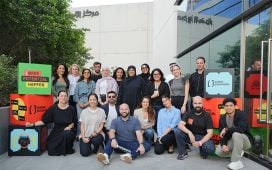Brands are going to have to try harder than ever before to capture their audience’s imagination, and it’s going to take courage says Yousef Tuqan Tuqan
Although agencies pride themselves on their ability to offer advertisers an integrated offering, the line between media, communications, creativity and technology has become completely blurred. By 2017, Gartner has predicted that chief marketing officers will be spending more on IT than the chief information officer, and advertisers seem to be increasingly willing to ‘cherry-pick’ specialist offerings from individual agencies across a range of disciplines.
Advertisers are demanding far more than just great creative and awards – they are demanding that agencies innovate and find ways to lead their brands to new opportunities in order to differentiate their offering and catch the attention of increasingly fickle consumers.
As Henry Ford famously said: “If I had asked people what they wanted, they would have said faster horses.”
With all the tools, data and insight that agencies have at their fingertips today, how often do we actually sell advertisers anything other than a faster horse?
In the 2012 annual reports of some of the world’s most respected brands, the word ‘innovation’ keeps popping up. Apple mentions it 22 times. Google, 14. That’s what we expect from companies such as Apple and Google. But here are the numbers from some more ‘traditional’ companies: Scotts-Miracle Gro (21); Cambell’s Soup (18); Procter & Gamble (24).
Everyone is talking about innovation. How can innovation help me reach my customers more effectively? How can innovation help me optimise my marketing spend? How can innovation help me differentiate my brand? How can innovation help me improve my products?
I know we say this every year, but 2014 really is the year that digital will grow up in the MENA region. We really are in the most exciting times in the history of technology, communication and entertainment, and things that we thought were impossible only a few years ago have become ubiquitous.
With this revolution the need for agencies to adapt or perish has never been stronger, and here are some of the key trends and opportunities that will allow agencies and advertisers to cut through the clutter and reach our increasingly distracted and demanding audiences.
The Real World Web
Our digital life has gotten a lot more personal and it’s only going to get more prevalent. From the ubiquitous Nike, Jawbone and Fitbit personal tracking bracelets to smartwatches from Samsung, Sony Mobile and Pebble and the promise of Google Glass, the internet just got real. Although some of these technologies are limited and may seem quite niche, brands that are brave enough to try anything in these spaces will be rewarded.
Immersive brand experiences
Unforgettable and disruptive real-world brand experiences are going to become more prevalent, more digital, and more powerful than ever before. Who wasn’t moved by watching Westjet’s ‘Christmas Miracle’ or Coca-Cola’s ‘Small World Machines’ last year? Expect to see brands doing bigger, better and crazier things in malls, in retail and in outdoor spaces.
Online marketplaces
The internet has broken the monopoly that Middle East bricks-and-mortar retailers have enjoyed, and if they can’t beat them, they’re joining them. Consumers now have access to online-only specialist retailers like Namshi and Jadopado, clicks-and-mortar real-world retailers like Landmark Shops, or digital heavyweights like dubizzle and Souq. Brands will increasingly begin to consider how they can drive volume and brand value by selling through online channels.
Old Media is the New Media
Regional media brands like ARN (Arabian Radio Network) and OSN have taken what were once considered analog, one-way channels like radio and TV, and have turned them into real-time, highly targeted media through mobile apps, mobile streaming, digital broadcast and OTT (Over The Top) set-top boxes. They know more about their subscribers than ever before and the smartest brands will use that customer insight to drive value.
Bravery
Last year’s Red Bull Stratos event not only broke records for the highest manned balloon flight and the highest altitude jump, it was also shown on 80 TV stations in 50 countries and a record-setting 52 million live streams. By all accounts it was one of the most successful marketing campaigns in history. It wasn’t just Felix Baumgartner who showed bravery by jumping out of a balloon at an altitude of 39km. It also takes a brave brand manager to throw somebody wearing their logo out of that balloon. And it is also a very brand Brand Manager who is willing to wait seven years and spend $30 million dollars to do it.
Brands are going to have to try harder than ever before to capture their audience’s imagination, and it’s going to take courage. Agencies need to be brave and experiment with technologies and products that can’t be billed back to their clients, and brands will have to be brave by challenging social norms, stepping out of their prescribed brand identity and do things that might completely backfire on them to get noticed.
The reality is that if you want to be the brands of the future, you have to write the future. You have to identify those trends, make those uncomfortable decisions, and not go to where the future is, but where it’s going to be. And you will have to be brave. Very, very brave.
Yousef Tuqan Tuqan is chief innovation officer at Leo Burnett MENA









